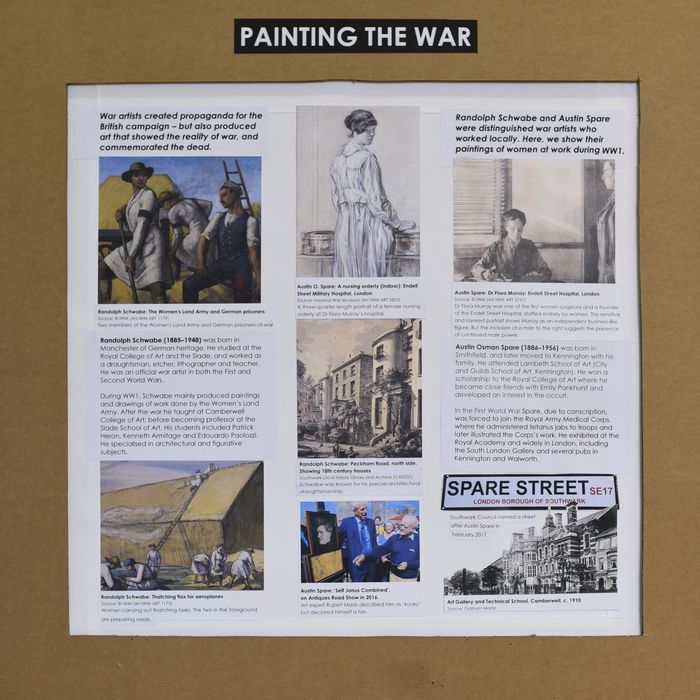War artists created propaganda for the British campaign – but also produced art that showed the reality of war, and commemorated the dead. Randolph Schwabe and Austin Spare were distinguished war artists who worked locally. Here, we show their paintings of women at work during WW1.

Randolph Schwabe (1885–1948) was born in Manchester of German heritage. He studied at the Royal College of Art and the Slade, and worked as a draughtsman, etcher, lithographer and teacher. He was an official war artist in both the First and Second World Wars.
During WW1, Schwabe mainly produced paintings and drawings of work done by the Women’s Land Army. After the war he taught at Camberwell College of Art, before becoming professor at the Slade School of Art. His students included Patrick Heron, Kenneth Armitage and Edouardo Paolozzi. He specialised in architectural and figurative subjects.
Austin Osman Spare (1886–1956) was born in Smithfield, and later moved to Kennington with his family. He attended Lambeth School of Art (City and Guilds School of Art, Kennington). He won a scholarship to the Royal College of Art where he became close friends with Emily Pankhurst and developed an interest in the occult.
In the First World War Spare, due to conscription, was forced to join the Royal Army Medical Corps, where he administered tetanus jabs to troops and later illustrated the Corps’s work. He exhibited at the Royal Academy and widely in London, including the South London Gallery and several pubs in Kennington and Walworth.
